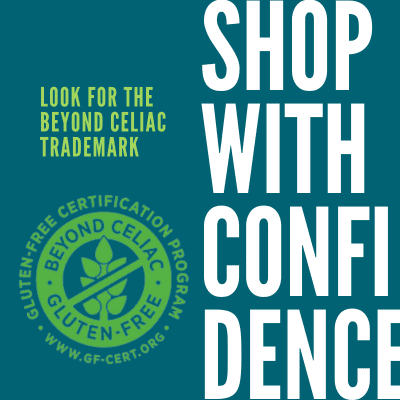Webinar Q&A with Registered Dietitian Tricia Thompson, MS, RD
July 31, 2012
To download the webinar slides and recording of “Setting the Record Straight: Dispelling Gluten-Free Manufacturing and Production Myths,” visit NFCA’s Webinar Archives.
The following questions were submitted following the webinar. Tricia Thompson, MS, RD, addresses the questions below:
Question 1:
You stated that oats need to be grown in fields that have not produced wheat/barley/rye/triticale in the past 4 – 5 years. Is it ok for someone with celiac to handle straw (which are the stalks of harvested wheat)?
Answer:
Producers of gluten-free oats take extraordinary steps to ensure their product is truly gluten-free. And yes, at least one producer of oats uses fields that have been wheat, barley, and rye free for a minimum of three years.
As for handling straw (hay), technically it should be 100% grass. However, since it is baled after the growing season it makes sense (intuitively anyway) that it may contain some grain. Hands and clothes should be thoroughly washed after handling hay.
Question 2:
I have heard conflicting information that buckwheat contains gluten, which I am sure is wrong, but some people do not feel it is safe. What is the best way to assure people it is indeed a safe food?
Answer:
Buckwheat is naturally gluten-free. While it is used like a grain, it is not a grain. Buckwheat is actually closely related to rhubarb. However, like all naturally gluten-free “grains” buckwheat may be contaminated with wheat, barley, and rye. For this reason it is very important to buy only those buckwheat products that are labeled gluten-free.
Question 3:
Referring to slide 11-will oats be included in the gluten containing grains since they may be contaminated?
Answer:
Under the proposed FDA rule for labeling foods gluten-free, oats are not considered a gluten-containing grain. They will be allowed in foods labeled gluten-free. Because they may be contaminated, it is very important that individuals with celiac disease eat only those oats and oat products that are labeled gluten-free.
Question 4:
Until standards are improved, what do we tell our patients about products with “may contain” or “processed in the same facility” statements?
Answer:
Allergen advisory statements (i.e., may contain wheat, processed in the same facility as products containing wheat) are voluntary and not defined by any Federal regulations. If a product is labeled gluten-free and also includes an allergen advisory statement for wheat on the food label, the food (under the FDA’s proposed gluten-free labeling rule) must contain less than 20 parts per million of gluten. If a product is NOT labeled gluten-free, individuals with celiac disease may want to contact the manufacturer to discuss quality control procedures.
Question 5:
Is white rice ok to eat if you have celiac disease?
Answer:
Yes, white rice is naturally gluten-free.
Question 6:
Just to clarify – it is not recommended to consume any product that contains barley or rye derivatives, even if it has been tested as <20ppm because ELISA is not sensitive to all of the gluten? What about if something from these products are tested as <5ppm?
Answer:
Under the proposed FDA gluten-free labeling rule, an ingredient derived from a prohibited grain (i.e., wheat, barley, rye, triticale) cannot be included in a food labeled gluten-free IF it has NOT been processed to remove gluten. Ingredients that have not been processed to remove gluten include, hydrolyzed wheat protein, wheat germ, wheat bran, barley malt extract or flavoring, malt vinegar, and flours made from prohibited grains. These ingredients may not be included in food labeled gluten-free even if the food product contains less than 20 parts per million of gluten.
The sandwich R5 ELISA cannot accurately detect gluten that has been hydrolyzed or broken apart. This type of ELISA requires two antibody binding sites. When gluten is hydrolyzed or fermented two binding sites may not be available. What is known as a competitive ELISA requires only one antibody binding site and is helpful in testing foods that may contain hydrolyzed gluten. Unfortunately, the competitive R5 ELISA has not yet been formally validated in a multi-laboratory performance evaluation. This is one reason why the “gluten-free” beers made using barley malt are so controversial.
Question 7:
What is the testing peramiters for cosmetics? Does this same ELISA apply?
Answer:
The assays that are available for gluten detection were developed to be used on food not cosmetics. Because of the mix of ingredients in cosmetics both the sandwich and competitive R5 ELISAs should be used. In addition, what are referred to as spiked samples (i.e., a known amount of gluten is added to a sample. The sample is then assessed for gluten content) should be run to make sure nothing in the cosmetic is interfering with gluten extraction.
Question 8:
What about the labeling Trader Joe’s uses stating “foods may be processed in a facility that also processes wheat”…
Answer:
Under the proposed FDA rule for labeling food gluten-free, a food must contain less than 20 parts per million of gluten regardless of whether the gluten comes from ingredients or cross contamination. In other words, even if a food labeled gluten-free includes an allergen advisory statement for wheat it still must abide by labeling rules.
Question 9:
Is there any concern that a gluten-sensitive individual may be sensitive to gluten in amounts less than 20 PPM?
Answer:
When you say gluten-sensitive I am unsure whether you mean celiac disease or non-celiac gluten sensitivity. So little is known about non-celiac gluten sensitivity, that I really can’t comment on the overall sensitivity of this population. As for celiac disease, most celiac disease experts believe that 10 milligrams of gluten can be eaten on a daily basis without damaging the small intestine. At this level, 17 ounce-ounce servings of food containing 20 parts per million of gluten could be eaten before reaching the 10 milligram level (at 20 ppm each one-ounce serving contains about 0.57 milligrams of gluten). Personally, I have concerns that some individuals may not be able to tolerate this amount of gluten. The good news is that about 87% of the products tested through Gluten Free Watchdog are testing below 5 parts per million of gluten (the lower limit of quantification for the sandwich R5 ELISA).
Question 10:
How frequently will manufacturers be required to test products?
Answer:
Under the proposed FDA rule there is no requirement that manufacturers who label products gluten-free must test for gluten.
Question 11:
How long will it take for products meeting the new standards to reach retail shelves?
Answer:
I imagine this information will be provided by the FDA when the final rule is released.
Watch the webinar recording: Setting the Record Straight: Dispelling Gluten-Free Manufacturing and Production Myths


